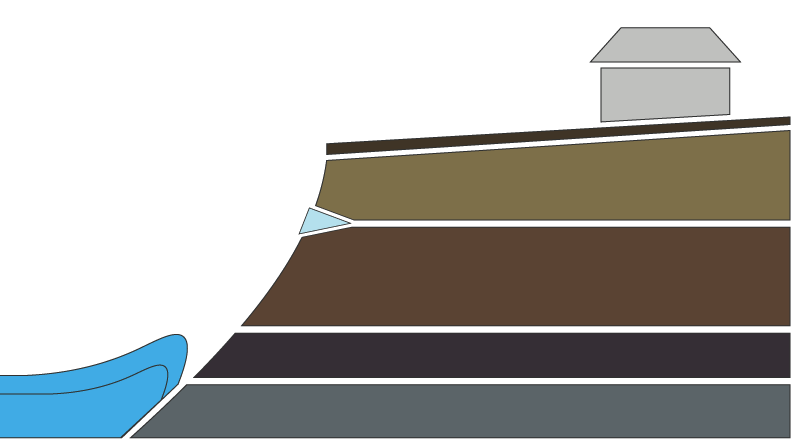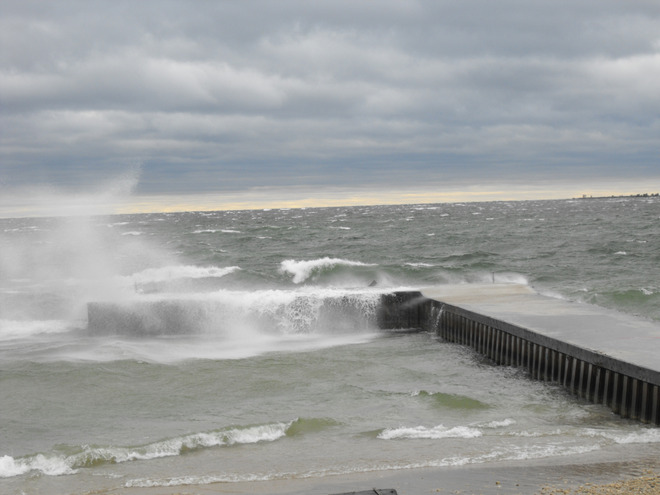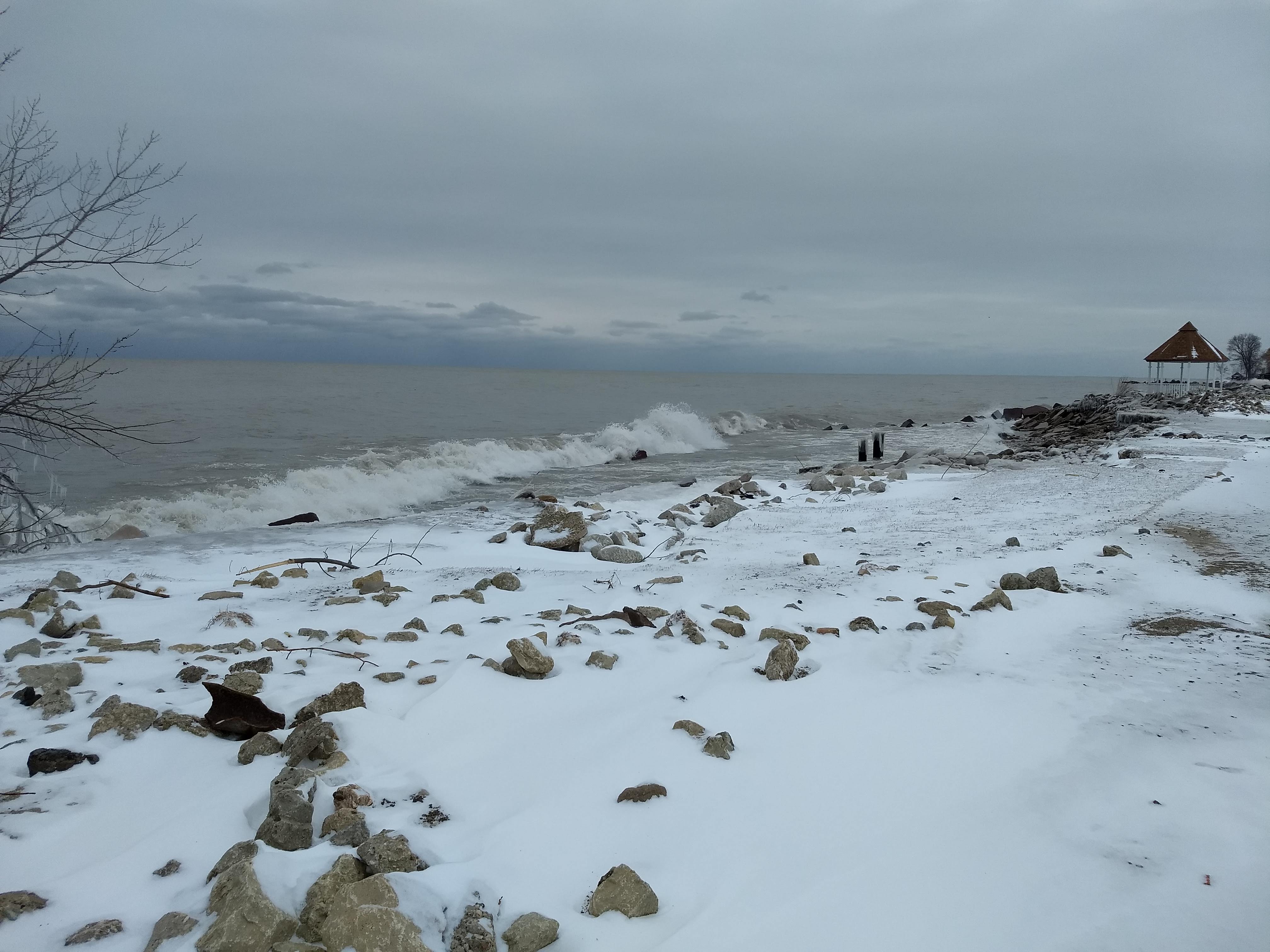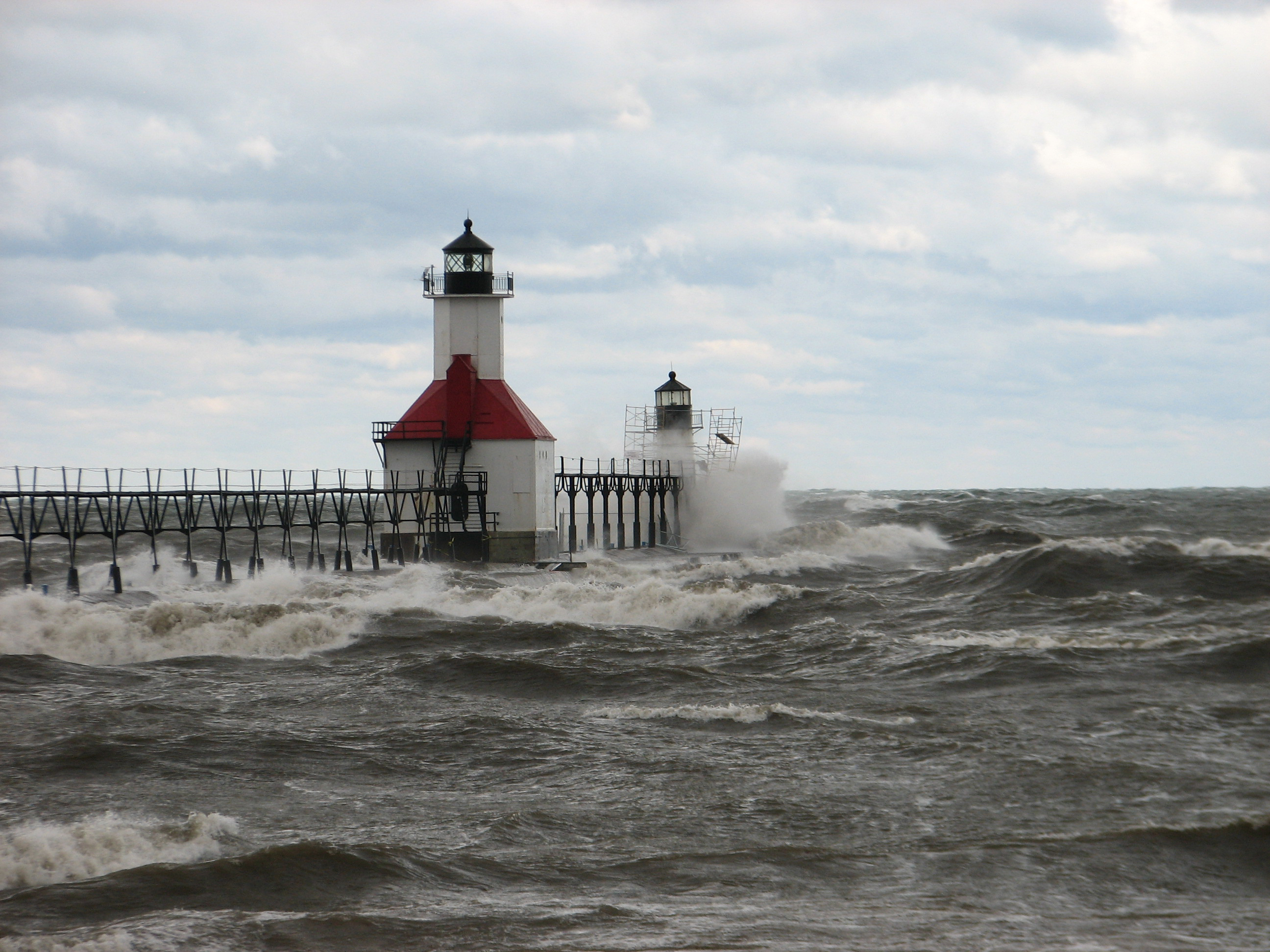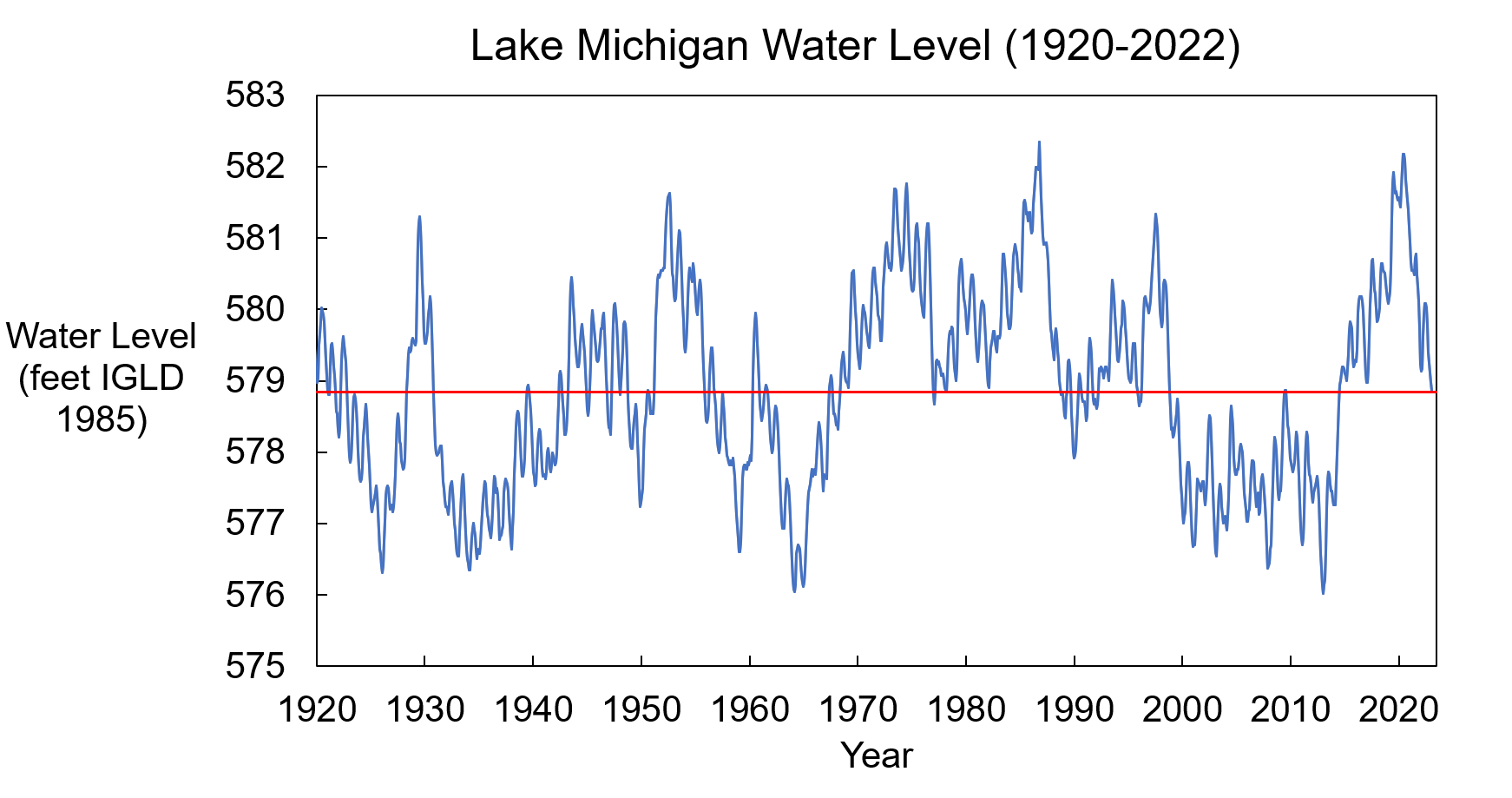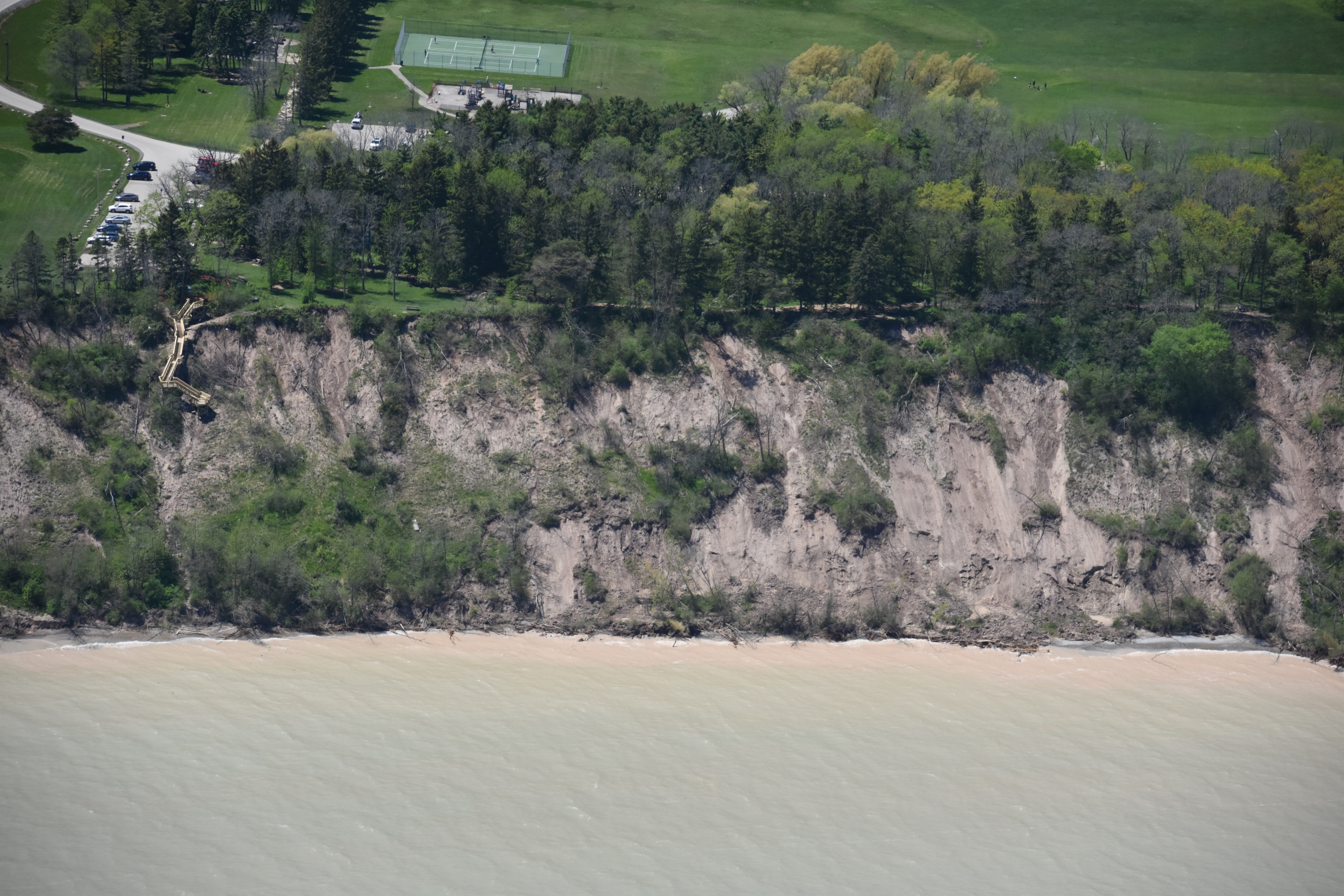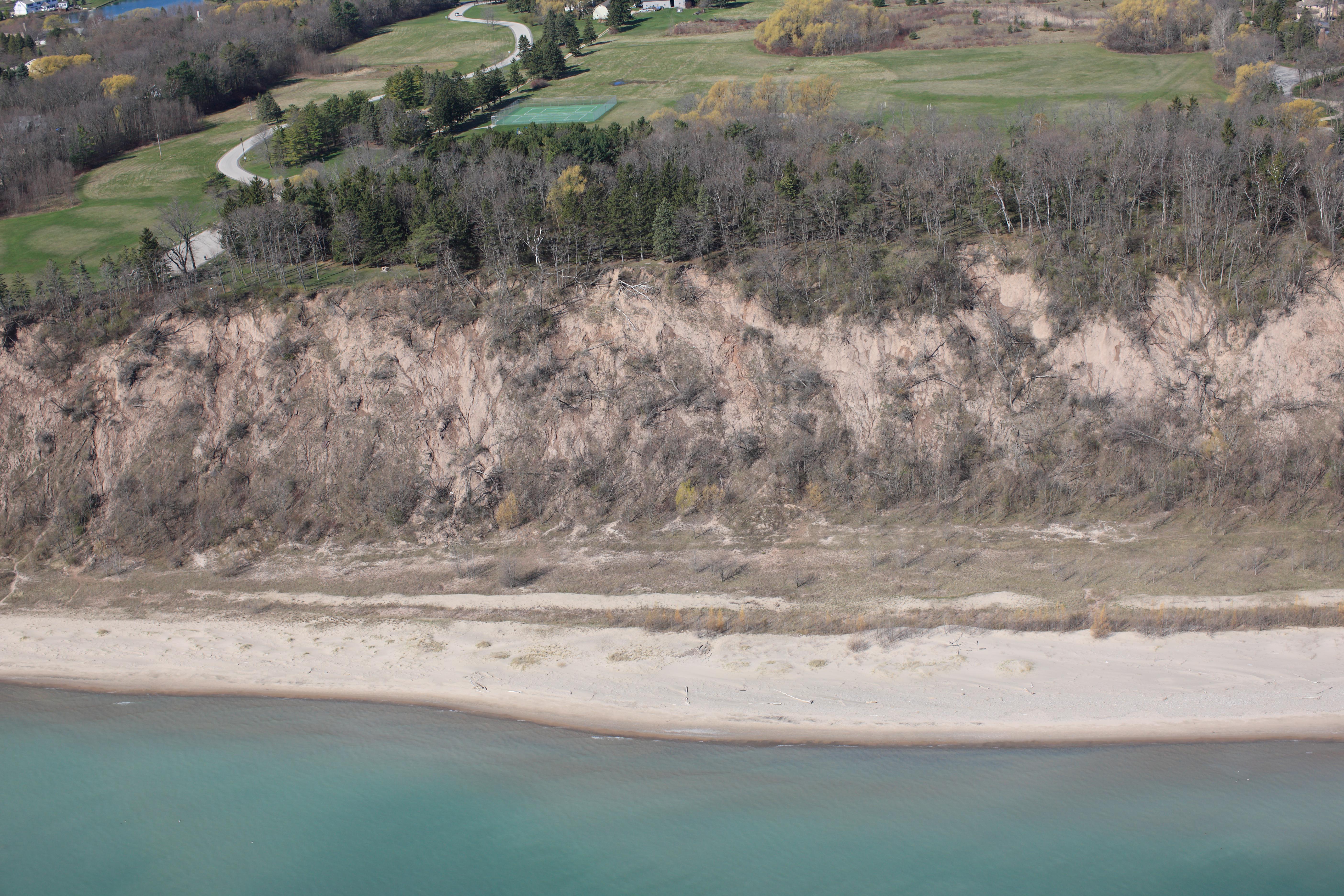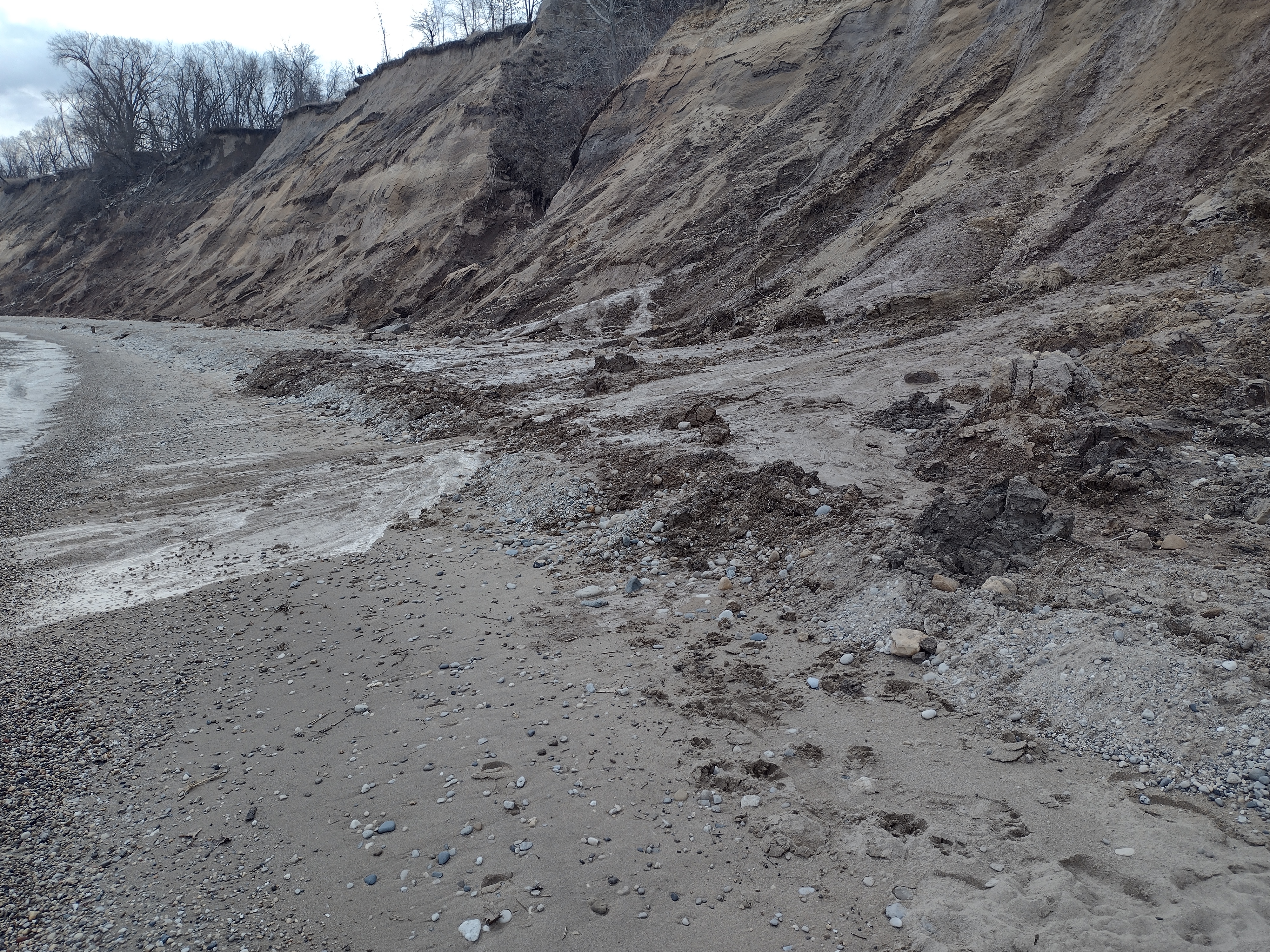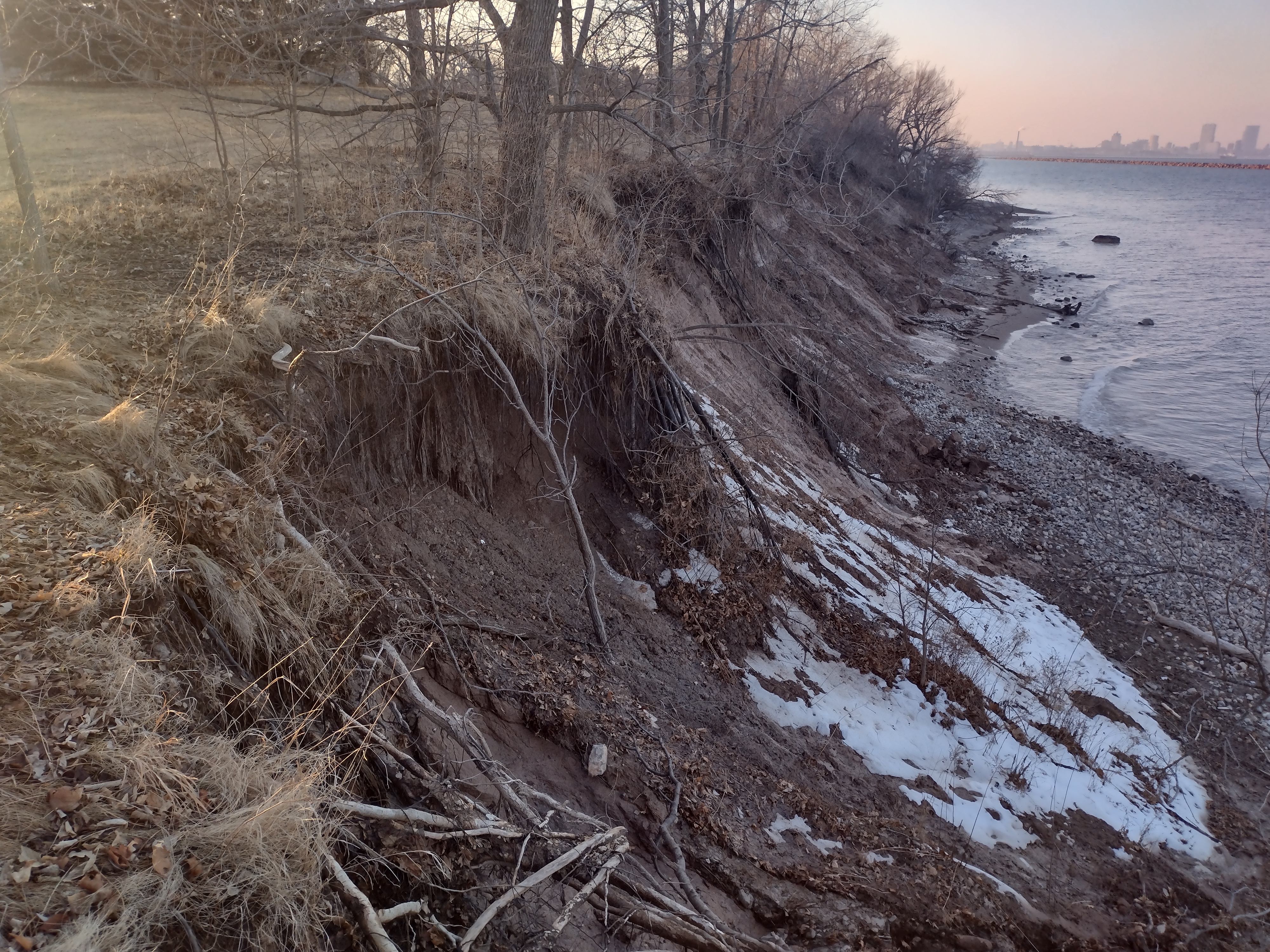1. Erosion Processes
Bluffs are a dynamic part of the landscape, continuously changing, and constantly moving toward a stable slope angle. For bluffs composed of glacial till such as those in Wisconsin, the stable angle is approximately 22-degrees. Bluff erosion is caused by many factors, as illustrated by the diagram below:
Bluff erosion processes.
Each erosion factor is depicted in the above diagram. Click the button below or continue scrolling to learn more about the variables that influence erosion.
